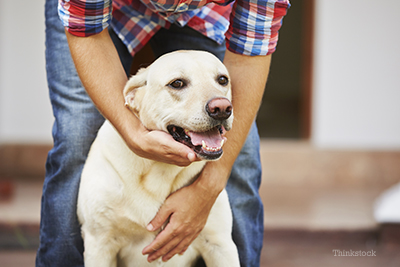
From supermodel Cindy Crawford with her signature beauty mark on her face to a little poodle with a mole on her ear, plenty of people and lots of dogs have skin lumps and bumps. If your dog has warts, moles or beauty marks, how do you know which ones are nothing to worry about and which ones require attention?
Your dog can develop bumps from infection or allergies that are benign or harmless. But he can also develop permanent, abnormal growths of skin cells or tumors. In fact, according to Merck Manuals, tumors affecting the skin or the tissue just under the skin are the most commonly seen tumors in dogs. Luckily, the majority of skin tumors in dogs are benign, but you still need to be vigilant since early detection of the malignant ones is always best when it comes to treatment and a cure.
How can I spot abnormal lumps and bumps?
First, how obvious the appearance of any new growth on your dog’s skin is will be pretty dependent on your dog and his haircoat. If your dog starts licking or scratching at a new lesion, that will draw your attention to it. And if you have a short-coated dog a good look all over (remember ears, lips, gums, arm pits, groin and toes) is going to be pretty easy and should be part of your normal routine. But if you have a shaggy dog with long or thick hair, a thorough dermatological exam is going to be much harder. In those cases, examining the skin as the hair parts while you are brushing it will help you to see down to the skin itself. You can also feel for bumps. Going slowly and meticulously over your dog with a light touch of your fingertips can reveal surprisingly small growths.
How will you know if a lump is benign or malignant?
You won’t. Again, most skin lumps are benign but they should all be checked. So you will need to consult with your veterinarian. You also need to be prepared for the visit. You would be amazed at how often that pesky lump simply cannot be located once the dog is in the exam room at the clinic. That’s why it’s a good idea to make a ‘map’ of your dog and mark the location of each lump. Note its size (not in vague terms like ‘it’s the size of a quarter’ but in actual inches or millimeters) along with its shape and its color. This is the digital age so even snap a picture if you are so inclined. If you still aren’t sure you will be able to easily find the lump, mark the area with a magic marker or trim a bit of hair in that location -- anything that will help.
How will your veterinarian know?
In some cases, your veterinarian may be able to tell you, with relative certainty, that a lump is benign just by looking at it. In most cases, however, some type of diagnostic test will be required to get a definitive answer. Sometimes sufficient information can be obtained with a needle aspirate of some of the contents or cells from a lump. Other times surgical excision (if the tumor is small enough and in an accessible location) or a biopsy will be required for histopathology in order to know for sure.
The key is to be aware, to be looking and to address your dog’s lumps and bumps as soon as they appear. Don’t wait to see what happens or if it grows. See your veterinarian.
If you have any questions or concerns, you should always visit or call your veterinarian -- they are your best resource to ensure the health and well-being of your pets.




